Blood Pressure and the Seasons

High blood pressure may be more difficult to control in winter, according to research reported to the American Heart Association, at its meeting in Orlando last week.
A five-year study by a team from the United States found Department of Veterans Affairs analyzed data on 443,632 veterans treated for hypertension at 15 VA hospitals in cities throughout the US found that blood pressures during the summer were on average 7.76% lower than during the winter. The researchers found the same pattern emerged from each hospital they studied, regardless of whether it was based in a warm or cold climate, in locations that ranged from Anchorage, Alaska to San Juan, Puerto Rico.
This is an intriguing finding, and there are a load of potential explanations for it:
A more active summer lifestyle may be the key
It is also possible that people might eat more salty foods in winter, and salt is strongly linked to raised blood pressure
There may also be a link with sunlight. Which can trigger a number of metabolic changes
But I also need to sound a note of caution: blood pressure changes all the time throughout the day. Although the study was all done correctly, it is important to realize that many subtle variations in blood pressure could be lurking within the data.
Nonetheless, people should be aware of the possibility that their blood pressure may be harder to control in the winter, and to be more vigilant at this time.
“For everything there is a season, And a time for every matter under heaven: A time to be born, and a time to die; A time to plant, and a time to pluck up what is planted; A time to kill, and a time to heal; A time to break down, and a time to build up; A time to weep, and a time to laugh; A time to mourn, and a time to dance; A time to throw away stones, and a time to gather stones together; A time to embrace, And a time to refrain from embracing; A time to seek, and a time to lose; A time to keep, and a time to throw away; A time to tear, and a time to sew; A time to keep silence, and a time to speak; A time to love, and a time to hate, A time for war, and a time for peace.”
–The Bible, Ecclesiastes, 3:1-8
“Each new season grows from the leftovers from the past. That is the essence of change, and change is the basic law.”
–Hal Borland (American Writer, 1900-1978)
“Live in each season as it passes; breathe the air, drink the drink, taste the fruit, and resign yourself to the influences of each. Let them be your only diet drink and botanical medicines.”
–Henry David Thoreau (American Essayist and Philosopher, 1817-1862)
Television and High Blood Pressure in Overweight Children
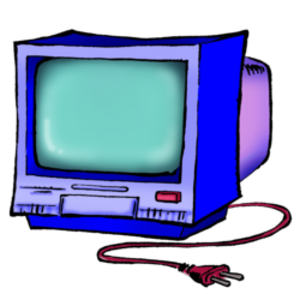
After learning that watching too much television may cause behavior problems in children, a new report in the American Journal of Preventive Medicine indicates that watching too much television may push up a child’s blood pressure, but only if he or she is overweight.
Researchers from the University of California, San Diego; the Rady Children’s Hospital – San Diego; the University of California, San Francisco; and the University of South Alabama collected data on 546 young people, aged 4 to 17 years, who were evaluated for obesity at pediatric subspecialty weight management clinics in San Diego, San Francisco and Dayton, Ohio, from 2003 to 2005. Children and their parent(s) were given a written questionnaire, which was used to estimate the average daily time spent watching TV, and then a physician verbally reviewed and confirmed the time estimate. The height and weight of the children were measured to determine a Body Mass Index and their blood pressures were recorded.
The investigators found that TV time was positively correlated with the severity of obesity. After controlling for race, site, and BMI score, both the severity of obesity and daily TV time were significant independent predictors of the presence of hypertension. Children watching 2 to 4 hours of TV had 2.5 times the odds of hypertension compared with children watching 0 to 2 hours. The odds of hypertension for children watching 4 or more hours of TV were 3.3 times greater than for children watching less than 2 hours of TV.
Yet more evidence that as wonderful as the television can be, too much of anything is not a good idea.
Well, almost anything…
“I find television very educating. Every time somebody turns on the set I go into the other room and read a book.”
–Groucho Marx (American Comedian, 1890-1977)
Acupuncture for Hypertension
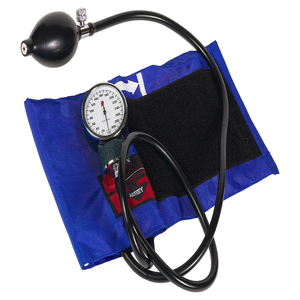
In China and Japan I have seen acupuncture used to treat just about everything, with varying degrees of success.
Researchers from Erlangen in Germany have published a randomized single blind trial comparing acupuncture with sham needling in the journal Circulation. The results suggest that acupuncture may decrease blood pressure in hypertensive patients by a similar amount to that achieved using medication.
The investigators randomized 160 outpatients (mean age 58) with uncomplicated, mild to moderate hypertension to six weeks of acupuncture performed by Chinese medicine practitioners (trained in China), or to a sham procedure. Those on hypertensive medication continued taking it.
Patients were assigned to one of four patterns of hypertension, based on TCM diagnosis. Those in both trial arms underwent 22, 30-minute treatment sessions over a six-week period. During each session, three acupuncture points were needled bilaterally for 20 minutes. In the active treatment group, the points were chosen according to traditional Chinese medical diagnosis. Sham treatment consisted of needling points that according to Chinese medical theory would have no effect on blood pressure
Twenty-four hour ambulatory systolic and diastolic blood pressures were significantly reduced from baseline in the acupuncture-treated patients (by 5.4 mmHg and 3.0 mmHg, respectively). No significant decrease was seen in the sham-treated patients. The extent of blood pressure reduction observed was comparable to that seen with ACE-inhibitor monotherapy or aggressive lifestyle changes. However, blood pressure returned to pretreatment levels within 12 weeks of treatment cessation, leading investigators to conclude that ongoing acupuncture treatments would be required to maintain the beneficial effects.
This in an interesting study, but I agree entirely with some of the comments made in an accompanying editorial by Fiona Turnbull and Anushka Patel from the George Institute for International Health in Sydney, Australia.
Randomized trials of acupuncture have been conducted since the 1970s, but many were of poor quality, and did not even include control groups. In 1995 the World Health Organization published clear guidelines for clinical research on acupuncture, which included detailed information relating to the nature of control groups and blinding in randomized controlled trials. More recently, a National Institutes of Health Consensus Development Panel stated that the acceptance of acupuncture as a reliable therapeutic choice would depend on its evaluation using study designs that could withstand careful scientific scrutiny.
The whole issue of “sham” acupuncture remains problematic. Not only are we doing something physical. But the people administering the acupuncture know whether or not they are needling an “active” point, an even if they say nothing, they may well communicate what they are doing. There is also a more subtle point that is not raised in the editorial. A good acupuncturist does not just stick in a needle. He or she waits for the appearance of a characteristic and subjective needle sensation that tells him or her whether the needle is in the correct position.
Acupuncture studies are, simply for logistical reasons, usually fairly small and this one was no exception. And that brings us to the other point. Most forms of alternative and complementary treatment are very time consuming, and need a lot from a patient who has to show up for multiple treatments, for which he may be paying himself.
If a course of acupuncture treatment can bring about some long-term change or re-balancing in a person that might be worthwhile, but in this study the blood pressure went back up once the treatment was discontinued.
T’ai Chi Chih and the Sympathetic Nervous System
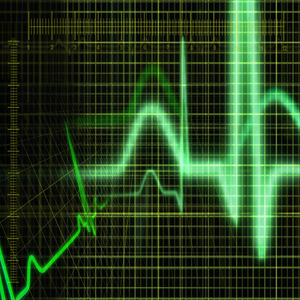
One of the problems about getting older is that the activity of the sympathetic nervous system may increase, bringing with it an increased risk of metabolic problems such as insulin resistance, hypertension and cardiovascular disease.
The sympathetic nervous system is a branch of the autonomic nervous system. It is always active at a basal level, which is called sympathetic tone. It becomes more active during times of stress. Its actions during the stress response comprise the classical fight-or-flight response.
There is a very interesting study from the Norman Cousins Center for Psychoneuroimmunology at the UCLA Semel Institute for Neuroscience & Human Behavior in Los Angeles.
There were 32 people in the study aged 60 or over. There were 19 people who were T’ai Chi Chih (TCC) practitioners and 13 who were not. The practitioners had completed a 25-week training in TCC the 13 others just had health education classes. T’ai Chi Chih is a simplified type of T’ai Chi that emphasizes the development of qi, a.k.a. chi.
TCC practitioners performed the breathing and movements for 20 minutes, while HE participants passively rested for the same time. Investigators measured various cardiovascular parameters before and after the task. A subsample of participants returned for a second evaluation and performed videotape-guided stretching for 20 minutes to evaluate the cardiovascular effects of slow-moving physical activity. TCC performance was found to significantly decrease sympathetic nervous system activity as measured by cardiac pre-ejection, blood pressure and heart rate. In contrast, there was no change in sympathetic activity following passive rest or slow-moving physical activity.
This shows us that there is something different about T’ai Chi. Practicing it leads to a decrease in activity of the sympathetic nervous system to levels that are not achieved by performing comparable physical activity alone.
Can a Pain in the Neck Raise Your Blood Pressure?
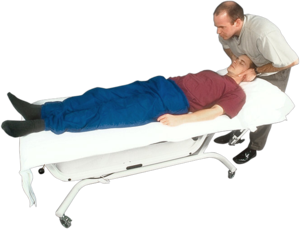
A chance discovery at the University of Leeds in the United Kingdom may give credence to longstanding claims by chiropractors that treating pain and stiffness by adjusting the neck can also lower blood pressure.
In a study published in the Journal of Neuroscience Jim Deuchars and his team report finding connections between rats’ neck muscles and a specific region of the brain. Their findings indicate that the neck muscles could play a key role in controlling blood pressure, heart rate and respiration.
They found that nerves run from receptors in the neck muscles to a region in the brainstem called the nucleus tractus solitarius that is known to be involved in the control of autonomic nervous system. It seems likely that signals from the neck could play a key role in ensuring an adequate supply of blood to the brain as we change position, for instance standing up suddenly. If the signaling system fails we may run into problems with low blood pressure (postural hypotension) and difficulties with balance.
Although it is early days, and it is a long way from a rat study to understanding human physiology, the finding may do more than provide a tentative explanation for the chiropractic reports. It may also explain another puzzle: why some people with whiplash injuries get trouble with their blood pressure. On the other hand, there have been a number of studies that have shown that the practice of yoga may help control blood pressure. It had been assumed that it was simply a consequence of generalized relaxation, but perhaps it is more specific than that: could a soft flexible neck be important in maintaining a healthy blood pressure?
The best research studies are the ones that suggest more questions than answers: on that criterion this is a most important study.
Successful Aging
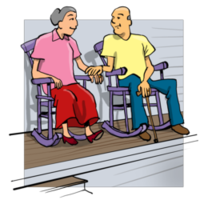
One of the most promising changes in psychology is the ever-greater emphasis on what makes us healthy, rather than constantly looking at the things that make us sick. There is an important approach called Behavioral Activation (BA) Theory, which emphasizes environmental and behavioral factors as determinants of our overall well-being. According to the theory, reduced engagement in pleasurable activities may be an important precursor of reduced well-being. This makes good sense: it is estimated that as much as 90% of our higher cortical functions are designed for social interactions.
This is something that I wrote in Healing, Meaning and Purpose:
“Nothing in the Universe exists in isolation: We live in a Universe of relationships. It is inconceivable that anything can exist except in relationship to something else. The entire Universe is made up of integrated systems that function, develop and evolve together. A failure to construct and maintain healthy relationships can be a cause of much distress.
Several years ago I reported some interesting observations. At the time, I was doing a lot of research on diseases of blood vessels. I had developed a laboratory method for taking some of the cells that line blood vessels from volunteers and then growing them in a cell culture dish. We discovered that if we did not have enough cells in the dish, they would all die of “loneliness.” The exception is cancer cells, which in culture will grow on their own, like weeds.”
As an example in a paper published in February in the Archives of General Psychiatry it was shown that lonely individuals may be twice as likely to develop the type of dementia linked to Alzheimer’s disease in late life as those who are not lonely. The theory has been shown to predict psychiatric well-being in a number of populations, including the caregivers of people with Alzheimer’s disease, people with chronic pain, cancer patients and community-dwelling older people.
It is also known that psychiatric well-being, particularly emotional well-being, may play an important role in cardiovascular health. This may be due to an increase in the activity of the sympathetic nervous system that increases not only blood pressure, but also the levels of inflammatory mediators and coagulant factors in the blood.
In research from the University of California at La Jolla that was presented on Monday at the 2007 Annual Meeting of the American Psychiatric Association in San Diego, California, twenty two people with a mean age of 70 were studied, to see if there was a link between their behavioral activation, i.e. how satisfied they were with their leisure activities, their affective well-being and their blood pressure.
The findings were as expected: the less satisfied and engaged people were, the higher was their blood pressure.
This is only preliminary data, but it confirms something that we have said before: as we get older it is as important to stay socially engaged as it is to do mental exercise.
And if you known someone who is older and isolated, you might want to go and see them.
“The most terrible poverty is loneliness and the feeling of being unloved.”
–Mother Teresa of Calcutta (Albanian-born Indian Nun, Humanitarian and, in 1979, Winner of the Nobel Peace Prize, 1910-1997)
“What makes loneliness an anguish is not that I have no one to share my burden, but this: I have only my own burden to bear.”
–Dag Hammarskjöld (Swedish Statesman, Secretary-General of the United Nations from 1953-1961, and, in 1961, Winner of the Nobel Peace Prize, 1905-1961)
The Causes and Consequences of Insulin Resistance
I have spent so much time talking about insulin resistance becuase it is one of the greatest medical threats facing the world.
It is estimated that approximately 33% of the adult population of the United States is insulin resistant, and if left untreated many will develop diabetes, hypertension and an array of other problems. It is an epidemic that is expected to swamp most health care systems around the world, yet sadly it may in most cases be preventable.
There is an enormous literature on insulin resistance. As of this afternoon there are almost 33,000 scientific papers on the subject.
I created this graphic to try and summarize the key points about insulin resistance: the main factors that may cause it, as well as the most important medical consequences.
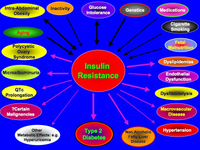
(Click on the graphic to expand it.)
The Main Causes of Insulin Resistance are:
- Aging
- Intra-abdominal obesity
- Inactivity
- Glucose intolerance
- Genetics
- Fetal malnutrition
- Cigarette smoking
- Some medications
The Main Consequences of Insulin Resistance are:
- Type 2 diabetes mellitus
- Hypertension
- Arteriosclerosis
- Polycystic ovarian syndrome
- Non alcoholic fatty liver disease
- Disturbances in the function of the vascular endothelium
- Elevations of triglycerides and cholesterol
- Disturbances of clotting
- Disturnaces in kidney function
- DIsturbances in one type of heart rhythm
- Elevated uric acide levels
- Some malignancies
This is probably not a complete list, but it gives you a very good idea of the reasons for looking for insulin resistance. Many – but not all – experts now recommend measuring insulin resistance in people at high risk of developing any of these medical problems.
We have good evidence that lifestyle changes can prevent the development of many of these dire consequences, so it is certainly something worth discussing with your health care provider.
Blood Pressure and the Brain
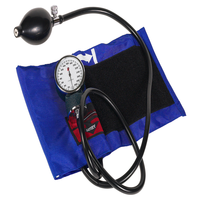
We have known for almost a century that regions of the brain are involved in the control of blood pressure.
Yet over the last three decades most of the emphasis in research into hypertension (high blood pressure) has focused on blood vessels, the heart and kidneys.
Now research from Bristol University in England has been published in this month’s issue of the journal Hypertension, and it may put the brain back into the center of research into the causes and treatment of high blood pressure.
Working with rats, the researchers isolated a protein called JAM-1 (junctional adhesion molecule-1), that is located in the walls of blood vessels in the brain. It appears to trap white blood cells causing obstruction of blood flow in some of the smallest blood vessels. This can cause inflammation and result in poor oxygen supply to the brain, which may in turn trigger events that raise blood pressure.
Though this work is in its early stages, this is exciting stuff: if confirmed, it might be possible to treat hypertension with drugs that reduce blood vessel inflammation and increase blood flow within the brain.
It also ties in with other recent research from Imperial College, London and Oxford University, in which a team of neurosurgeons and physiologists discovered changes in blood pressure while fitting brain electrodes to 15 patients for pain control.
Deep brain stimulation involves placing very thin electrodes on very exact locations in the brain and is already used to relieve pain and to help Parkinson’s disease patients with their movement.
The researchers found that they could make patients’ blood pressure increase or decrease by stimulating very specific regions of the brain with the electrodes. Regions that have been associated with blood pressure control in the past. If they stimulated an area deep down in the midbrain called the ventral periventricular/periaqueductal gray matter, blood pressure went down, and if they stimulated the dorsal periventricular/periaqueductal gray matter it went up.
Nobody is suggesting that we should start sticking electrodes in peoples’ brain, but this chance observation may have profound implications, particularly for people who drop their blood pressure too far when they are treated with standard medicines.
These two pieces of research may also help explain why a balanced inflammation–reducing diet and relaxation may both reduce blood pressure.
Hot Flashes and High Blood Pressure
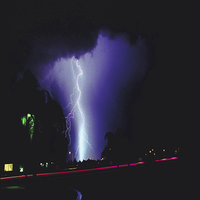
Many women experiencing hot flashes do feel as if their blood pressure is going up.
Well, there is some new research linking hot flashes and hypertension.
A hot flash (sometimes also referred to as a “hot flush” or, incorrectly a “night sweat”) is a symptom of changing hormone levels considered characteristic of menopause.
Hot flashes are typically experienced as a feeling of intense heat with sweating and rapid heartbeat,
and typically last from two to thirty minutes on each occasion. The event may be repeated a few times each week or up to a
dozen times a day, with the frequency reducing over time. Excessive
flushing can lead to the skin problem rosacea.
The study from Weill Cornell Medical College was published in the March/April issue of Menopause: The Journal of the North American Menopause Society.
The researchers used portable monitors to record the blood pressure of 154 New York City women, aged 18 to 65 (mean age of 46). The women had no previous cardiovascular disease and either mild hypertension or normal blood pressure. Fifty-one women reported experiencing hot flashes. These women were found to have an age-adjusted mean systolic awake blood pressure of 141 and a mean systolic sleep blood pressure of 129 — compared to 132 and 119, respectively, for women not reporting hot flashes. The results were highly significant. For people whose lives are not complete without a little “p,” the values were: p=0.004 and 0.007. The group differences for systolic blood pressure remained statistically significant after controlling for conventional hypertension risk factors, race/ethnicity, age and body mass index (BMI).
This is important research: High blood pressure is a major risk factor for heart disease, with the latter being responsible for half of all deaths among American women 50 and older.
We need to understand more about the mechanism linking blood pressure and hot flashes, but this research already suggests that women with flashes are at especially high risk. So if you know someone who ishaving them, make sure that they are having their blood pressure monitored on a regular basis.
Diseases of Discipleship

You will not find them listed on WebMD, but “Diseases of Discipleship” are nonetheless very real. I have mentioned them in Healing Meaning and Purpose and also here. They are the result of sudden access to spiritual energies that can upset the balance of the body, mind and spirit. The great value of having a teacher is to help you balance and work with these energies without being harmed by them.
Several of my own teachers talked a lot about these diseases of discipleship, but I would particularly like to single out Douglas Baker and the writings of Roberto Assagioli, Del Pe, Torkom Saraydarian, Stan Grof and Alice Bailey.
I have also had a great deal of experience with people undergoing spiritual crises. Many have been referred to me by priests, clergy and intuitives, because many of the individuals thought that they were “going crazy,” and some had ben given psychiatric diagnoses. That extensive experience has helped me and some of my students to describe some of the “symptoms” in more detail.
Roberto Assagioli identified five critical points where problems may arise:
- Just before spiritual awakening begins
- Crises caused by spiritual awakening
- Reactions to spiritual awakening
- Phases of the process of transmutation
- The “Dark Night of the Soul”
Today I am just going to focus on the crises caused by spiritual awakening, because a great many people are experiencing them at the moment.
Here are some of the more common signs and symptoms include:
- Visual disturbances
- Extreme sensitivity to light and sound
- Paradoxically they often also find a raised pain threshold
- Increased metabolic rate, which may cause a slight increase in body temperature and a little weight loss
- Variable libido: some people lose all interest in sex, but most experience an increase in sexual desire, which can take them and any partners by surprise
- Disturbances in circadian rhythms
- Disturbances in thyroid and adrenal function: the thyroid often becomes slightly – or sometimes more than slightly – overactive and the adrenal glands slightly less responsive to stimulation
- Hypoglycemia
- Hypertension
- Chronic fatigue
- Anxiety and a feeling of “butterflies” in the region of the solar plexus
- Inexplicable sensations roughly corresponding to the channels identified in Chinese and Ayurvedic medicine
- Irregular breathing patterns, usually hyperventilation
- Something that feels like electricity under the tongue and under the palate
- Crying for no readily apparent reason
- As peoples’ consciousness rises, it is quite common to experience “Synesthesia” in which senses overlap: people may taste sounds, feel colors and “hear and see” with different parts of the body
- Psychic abilities often begin to appear: clairvoyance, clairaudience, spiritual intuition and the ability to heal
- Many begin to feel and see their own Inner Light and the Inner Light of other people
Not everyone gets all of these symptoms and they may come and go for a while. Some people don’t get any at all, but they are unusual. There are two books by Hazel Courteney that detail some of what happened to her, and they are well worth a read.
It is important to emphasize that all of these signs and symptoms can also be caused by illnesses. So although most people who are going through all this want to avoid doctors, it is a very good idea to ensure that everything is okay. I once saw someone who had been told that she was having a kundalini experience, even though she did not have any of the usual features. She became very unwell, but felt much better when an insulin-producing tumor was removed from her pancreas.
The most important thing is to help people remain grounded. I have seen many people become extremely grandiose and even fanatical after going through a rapid spiritual awakening. It is also important to ensure that any physical symptoms – such as thyroid or blood pressure problems – do not continue unchecked.
Helping people who are going through spiritual change or crisis needs the help of a person or persons who understand physical and psychological problems, as well as being some way along the path of spiritual development. By “crisis” I do not mean crisis of faith, but a critical turning point in an individual’s personal development.
There are plenty of good ways of grounding using some physical, psychological and subtle system exercises. I have dozens of excellent techniques that I can publish if you are interested. Sometimes it is also a good idea to eat some heavy food.
It can be very helpful to get away form other people for a while. This doesn’t mean becoming a monk or nun, but just to avoid a bad case of people poisoning. In their overly sensitive state they can pick up a lot of negative things from the people around them. I have known a good many people who would begin to experience all the physical and psychological symptoms of the people around them.
Once we have confirmed that the person does not have all this as a result of thyroid disease or anxiety, it is essential to show them what is going on and the best way to approach and conceptualize it.
Next we help people to control some of the impulses that can otherwise swamp them. One of the many reasons for development of the sophisticated mind control techniques developed by Tibetan Buddhism was to help people watch their spiritual unfoldment without being overwhelmed by it.
We also try to help people to transmute psychological energies so that they can be used constructively.
Everybody is different, but in some people acupuncture, qigong, Reiki and homeopathy have all been helpful. Several of the flower essences can be very useful, in particular:
Vervain
Star Tulip
White Yarrow
Pink Yarrow
Every expert that I know in the field of spiritual development agrees with my observation that there are currently more people having major spiritual changes than ever before. It is essential for us all to know how to protect, support and birth them.
“To penetrate into the essence of all being and significance, and to release the fragrance of that inner attainment for the guidance and benefit of others, by expressing in the world of forms – truth, love, purity and beauty – this is the sole game that has any intrinsic and absolute worth. All other incidents and attainments can, in themselves, have no lasting importance.”
–Meher Baba (Indian Spiritual Teacher who, from July 1925 maintained Silence, 1894-1969)
“You knock at the door of Reality. You shake your thought wings, loosen your shoulders, and open.”
–Jalal al-Din Rumi (Afghan Sufi Poet, 1207-1273)
“Life is a series of awakenings.”
–Sri Swami Sivananda (Indian Physician and Spiritual Teacher, 1887-1963)
“What we usually call human evolution is the awakening of the Divine Nature within us.”
–“Peace Pilgrim” (a.k.a. Mildred Norman, American Peace Activist, 1908-1981)






